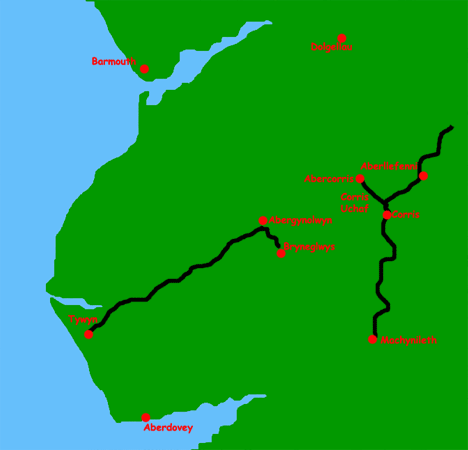

Ratgoed Quarry (also known as Ralltgoed) was the northernmost of the slate quarries served by the Corris Railway. It is located one mile north of Aberllefenni in north Wales at the head of the isolated Cwm Ceiswyr.
The original workings at Ratgoed date back to before 1840 when they are mentioned in the will of Horatio Nelson Hughes. In the late 1840s the quarry closed for a brief time, before re-opening in 1851. The quarry expanded in the 1850s and was being run by John Rowlands in a partnership that also owned the nearby Gaerwen and Braich Goch quarries. During the early 1860s shareholder discontent lead to the dismissal of Rowlands, with the quarry now being run my H. N. Hughes, a relation of the original owner Horatio Nelson Hughes.
In 1864 the Ratgoed Tramway opened, a 2 ft 3 in (686 mm) gauge horse worked tramway connecting the remote quarry with the newly opened Corris Railway at Aberllefenni. With the rail connection output expanded and the quarry ran profitably through 1878, but in 1879 slate prices dropped throughout the industry and small, remote concerns like Ratgoed suffered in the downturn. The quarry continued production in the 1880s but at a reduced annual output. Fortunes revived in the early 1890s but towards the end of the century the accessible supplies of more profitable roofing slates at Ratgoed were running dry and the owners attempted to sell the business in 1897. By 1900 the remaining workforce was dismissed.
The quarry briefly re-opened in 1901 but had to close again in 1903 as prices for slab slate fell again. In 1907 another restart was attempted and by 1911 more than 30 men were employed at Ratgoed. The advent of the First World War a year later again brought troubled times to the quarry and in 1918 only 6 men were working.
The quarry struggled on through the 1930s and the years of the Second World War, but in 1946 the quarry finally shut for good. The former quarry owner's house, Plas Ratgoed, is the only remaining habitable building in the hamlet of Ratgoed.